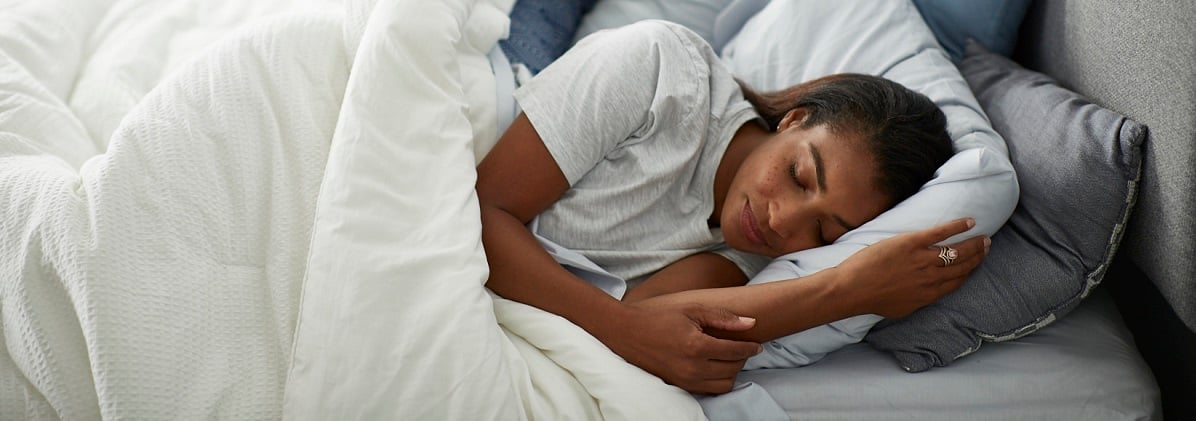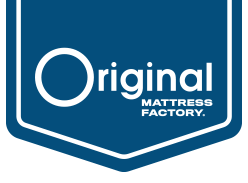
When shopping for a mattress, many people will focus only on comfort. But comfort is nothing without support.
Proper support is vital to healthy sleep, so support is one of the most important factors to consider when you’re looking for a new mattress. Support comes from the core of the mattress. Innersprings are the most common support system used in mattresses. There are many types of innersprings available, and they vary widely in quality, support, and durability.
We’re sharing what you need to know about the different types of innerspring units and coils available in mattresses today so you can make the best selection.
Features of a high-quality innerspring
There are a few elements to consider when you’re evaluating the support of an innerspring system. Each of these factors will impact the quality of the innerspring unit, but they should be evaluated together to determine quality.
Gauge: Gauge is the thickness of the wire used for the coils. The lower the number, the thicker the wire. For example, a 12.75-gauge wire is actually thicker than a 15-gauge wire.
Turns or rotations: The more turns or rotations a coil has, the more durable that coil will be. More turns allow the sleeper’s weight to be distributed across more wire, resulting in less wire fatigue in the coil.
Coil count: The number of coils in your mattress can be a tricky way to evaluate the quality of the support in a mattress. Keep in mind that it’s easy to cram in more coils if those coils are low quality. There should be a minimum of 300 coils in a full size, 375 in a queen, and 450 in a king, but this shouldn’t be the only factor you consider.
Edge-to-edge support: An innerspring unit can offer edge-to-edge support, or it can be foam encased (as is common with pocketed coil systems). Some innerspring units with edge-to-edge support (like those in OMF innerspring mattresses) also feature a border rod around the perimeter for additional edge support. A foam-encased unit is smaller in size because coils are removed and replaced with a foam edge.
Coil designs: There are six basic types of innerspring coil designs. Each of these can be classified as either open ended or knotted, with the exception of continuous coils. Knotting the ends of the coil gives the coil more stability. We’ll go over the different designs in the next section.
Tempering: Coils can also go through a process called tempering. Tempered innersprings are stronger and more durable. The tempering process, which involves heating the wire or innerspring unit to a high temperature, can be done electrically or in a tempering oven. The term “double tempered” or “twice tempered” is often used in the industry, but once a coil has been heated to the optimum temperature to achieve tempering, it cannot be tempered twice. All coils used by The Original Mattress Factory are tempered for maximum durability.
Types of innerspring coil designs
In addition to the considerations listed above, there are also different coil designs that can impact the quality and support of an innerspring unit.
Bonnell: An hourglass-shaped coil with a round, knotted head. It is typically made with tempered steel and at one time was commonly used in most mainstream brands’ entry level products as well as some promotional products. The Bonnell coil has been largely replaced by the Veritcoil® in most mainstream mattress brands. Our Classic line features a five-turn, 13-gauge, knotted Bonnell coil.
Continuous coil: A strip of coils that runs either vertically or horizontally with each head representing the end and beginning of consecutive coils. This design is made of one piece of tempered wire and commonly has a high coil count, but it uses less steel and a much thinner gauge of wire with a low number of turns. This creates a hard feeling coil, but low resiliency.
LFK coil: A straight-barrel coil with an offset, squared, and un-knotted head. It is made with tempered steel and is used in premium innerspring units. Our Regency line features a five-turn, 14.5-gauge offset LFK coil.
Marshall or pocketed coil: A straight-barrel, un-knotted coil that is encased in fabric. It is sometimes made with non-tempered steel, which reduces the long-term resiliency of the springs. This is also known as a pocketed coil and is very common in mainstream mattress brands’ flagship lines.
Offset coil: An hourglass-shaped coil with a square head that is typically knotted. It is made of tempered steel and is used in premium-quality innerspring units found in high-end luxury brands. The square-head design works with neighboring coils to hinge, offering excellent body-conformance characteristics. Our Orthopedic line features our highest-quality six-turn, 12.75-gauge, knotted offset coil.
Verticoil®: A straight barrel coil with an open-ended, offset coil head design. It incorporates some of the attributes of an LFK coil design but in a size more similar to that of a Bonnell coil. The VertiCoil® unit typically utilizes less wire and has fewer turns than other offerings and is now commonly used in most mainstream brand entry-level products.
Finding the right innerspring support for you
This is a lot of information to consider when you’re shopping for a new mattress, but remember: in an innerspring mattress, more steel means better support and durability. At The Original Mattress Factory, we have three types of innersprings that offer different support, durability, and quality, but all of our innersprings are able to offer adult-level support for every-night use.
Our team is available to help you understand the differences between our innersprings and those commonly used by our competitors so you can find the best fit for you.
Ready to start your mattress buying journey? Come to The Original Mattress Factory first. No one knows more than our team about what makes a great mattress great. Whether you buy from us or not, you’ll be better prepared to make a smart mattress buying decision. Find a store near you.


 Facebook
Facebook
 YouTube
YouTube Instagram
Instagram